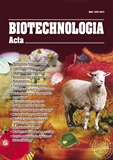ISSN 2410-7751 (Print)
ISSN 2410-776X (Online)

Biotechnologia Acta Т. 17, No. 2 , 2024
P. 90-92, Bibliography 9, Engl.
UDC:: 502/504:57(477.81) 577.47: 504.054
DOI: https://doi.org/10.15407/biotech17.02.090
THE BIOCHEMICAL RESPONSES OF BIVALVE MOLLUSCS TO NEUROLEPTIC CHLORPROMAZINE ARE COMPARABLE WITH THE RESPONSES OF HIGHER VERTEBRATES
K. Yunko 1, F. Impellitteri 2, V. Martyniuk 3, C.R. Multisanti 2, M. Zabolotna 1, V. Khoma 5, T. Matskiv 4
1 Ternopil Volodymyr Hnatiuk National Pedagogical University, Ukraine
2 University of Messina, Italy
3 Ternopil Ivan Puluj National Technical University, Ukraine
4 I. Ya. Horbachevsky Ternopil National Medical University, Ukraine
5 Ternopil Scientific Research Forensic Center of the Ministry of Internal Affairs of Ukraine
Pharmaceuticals such as chlorpromazine (Cpz) are emerging aquatic pollutants that potentially affect non-target organisms. However, its effects on marine organisms remain limited and inconclusive.
The aim of this study was to compare the responses to Cpz in marine and freshwater bivalve mollusks.
Methods. Mytilus galloprovincialis and Unio tumidus were exposed to pM and nM concentrations of Cpz for 14 days and analysed 16 parameters, including cytotoxicity, oxidative/reductive stress responses, metallothionein concentration, and biotransformation enzymes in the digestive gland.
Results. In both species, Cpz increased EROD activity, possibly leading to the formation of reactive metabolites. Marine mussels exposed to Cpz I and II showed increased GST activity, suggesting detoxification, whereas freshwater mussels showed decreased GST activity, suggesting higher Cpz toxicity. Activation of the GTPase dynamin in U. tumidus exposed to Cpz I confirmed the effect of Cpz on endocytosis. Oxidative stress responses were observed in both species, with changes in oxidative/reductive stress responses suggesting the toxic impact of Cpz. GSH and metallothionein concentrations increased in all exposures, while the NADH/NAD+ ratio increased significantly in U. tumidus. Loss of lysosomal membrane stability was observed in all exposed groups, with CtD efflux detected only in mussels. Differences in caspase-3 activity were also observed between species.
Conclusion. Cpz showed adverse effects on vertebrates at μM concentrations, while mussels were affected at pM to nM concentrations, indicating concentration-dependent interspecies effects. Stress responses were similar between species, suggesting that marine mollusks are a potential model for assessing the adverse impact of Cpz on higher vertebrates.
Key words: pharmaceuticals, bivalve mollusc, ecotoxicity, oxidative stress, biotransformation, apoptosis.
© Palladin Institute of Biochemistry of National Academy of Sciences of Ukraine, 2024

